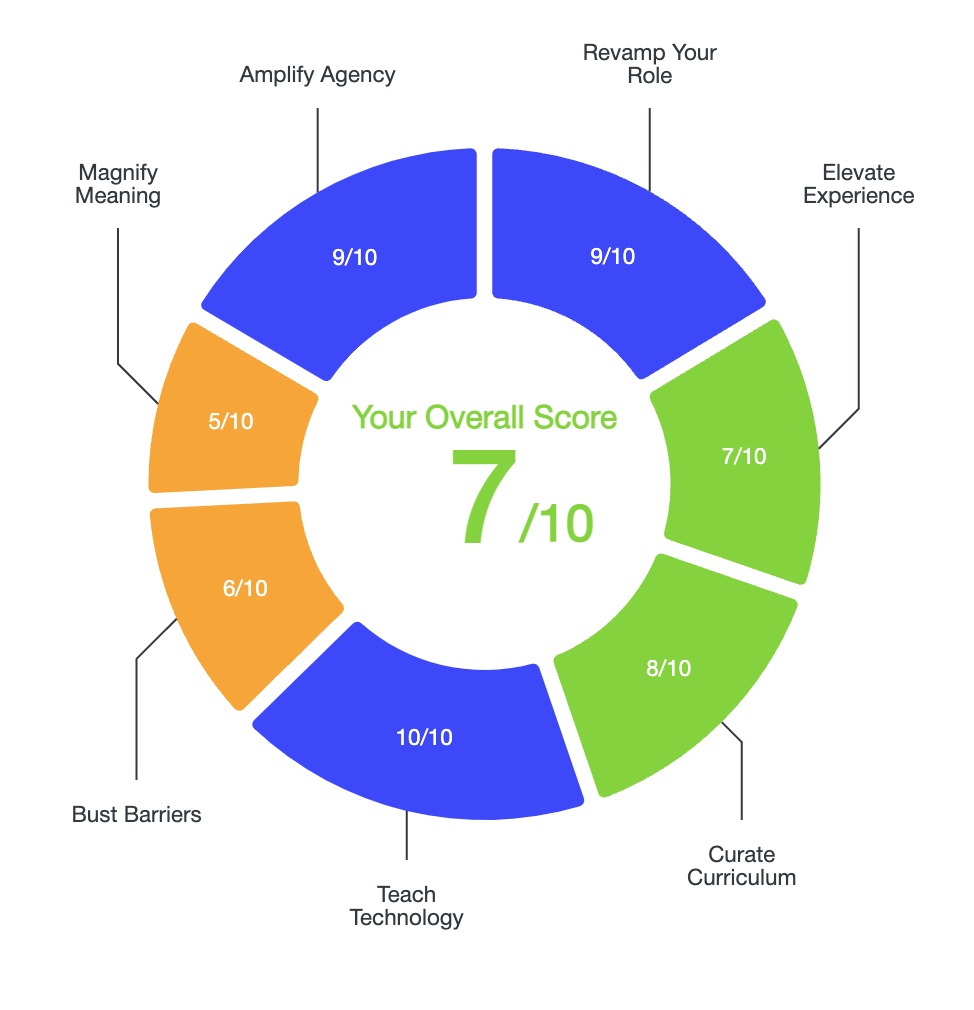Sending emails is just one of many time intensive tasks that teachers are expected to do outside of their regular work hours. Although it won’t completely do away with the need to send personal emails, you can save a significant amount of time by creating email templates in Gmail to automate your responses. I’d recommend setting up templates for pretty much any email you’d send out multiple times, particularly year-after-year. Read on or watch the video below to learn how.
How Gmail Templates Work
Let’s say you’re composing an email to parents about signing up for time slots for parent-teacher conferences. This might be email content you repeat more than once a year, and it’s certainly email content you’ll repeat year after year.
Rather than hunting around for your old email or typing up an entirely brand new one, if you have a template, all you’ll need to do is select that template, and it will pull in your pre-written email. Make a few small changes, and you just sent out a detailed email in a matter of seconds and probably saved yourself a half hour or more of time.
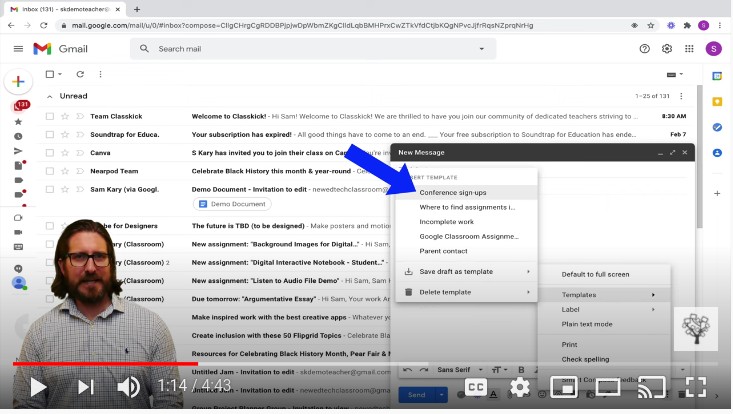
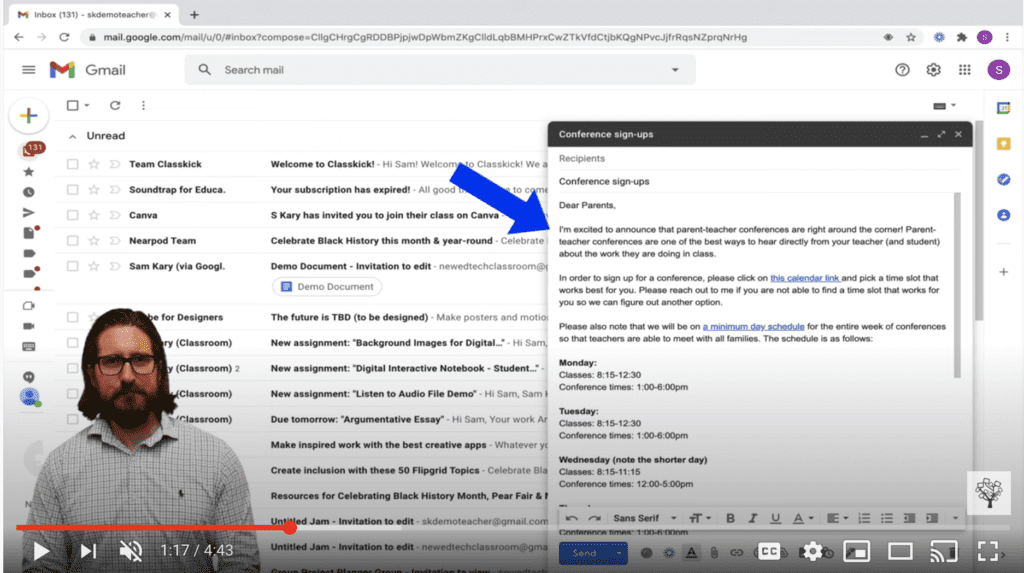
Enable Gmail Templates in the Settings
To create templates, you’ll first need to enable templates in your settings. To access your Gmail settings, go up to the Settings cog and click “See All Settings.” Then, go over to the Advanced Tab. There you’ll see that you have the option to Enable Email Templates. After you’ve changed the Templates setting to enabled, click Save Changes.
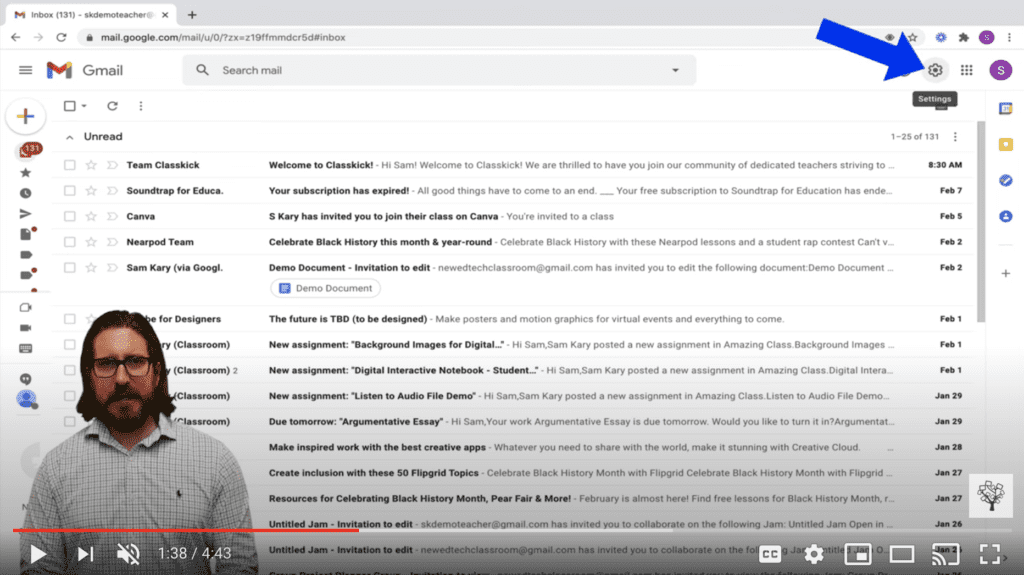
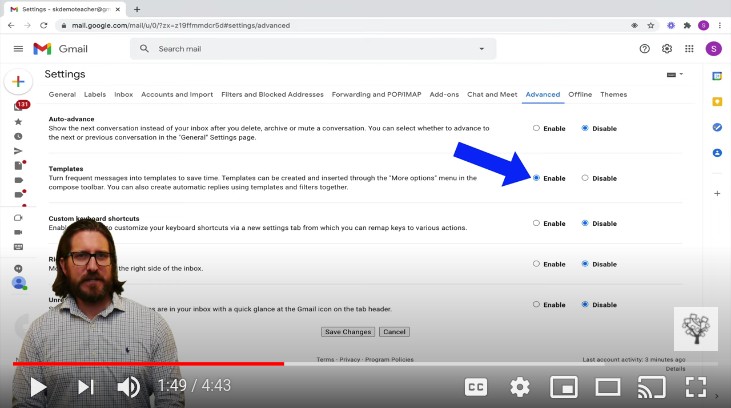
How to Create Gmail Templates
To create a template, you’ll need to open up a blank email and then type up the body of the email you want to convert into a template.
To help make sure you edit the correct parts of the template when reusing it, you might want to highlight sections of the text that you’ll want to replace with new information. For example, you might want to highlight the date ranges of your conferences in this email to make sure you change it every time you send out information about conferences.
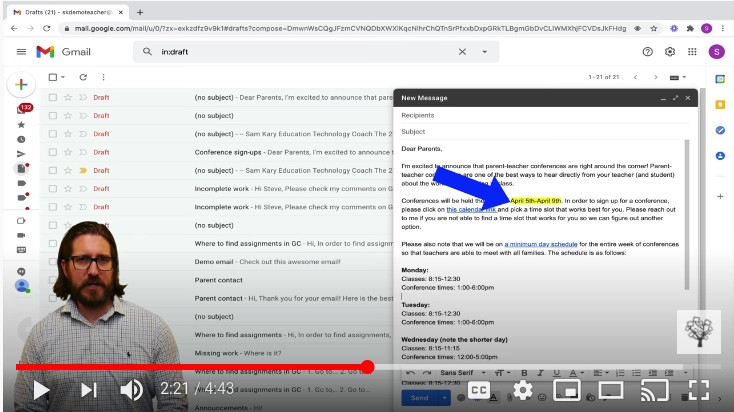
How to Save Your Email as a Template
Then, once you’re ready to convert this email into a template, click on the three dots on the bottom right hand corner of the email, select Templates. Then click Save Draft as Template.
Next you’ll be prompted to give your template a name, and be sure to give it a name that you’ll easily recognize from a list, such as “Parent-Teacher Conference Scheduling.” Then click “Save.”
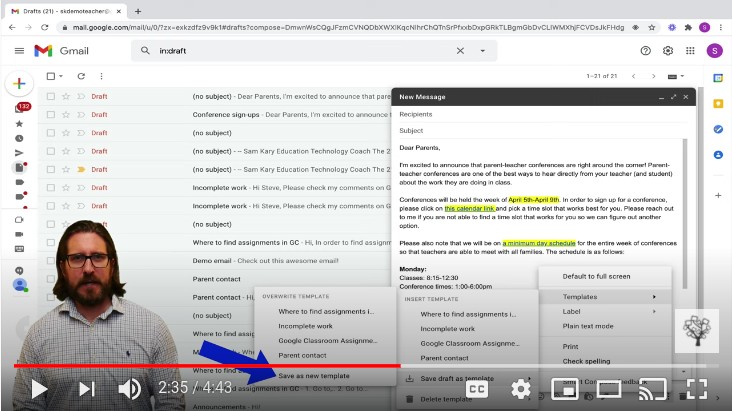
You Can Never Have Enough Templates!
Now that you’ve saved that email as a template, you’ll never have to retype it again!
All you’ll need to do is open up a new email, go back down to the three dot menu, and select Templates. This time under Insert Template, you’ll see the name of the template you just created. When you click on it, you’ll see that it auto-populates the new email with the content you already wrote. Just edit the highlighted areas, and hit send!
Like I mentioned in the beginning, there’s really no harm in creating lots of email templates to save you time: Gmail currently lets you create 50 of them. I’d recommend setting up templates for emails such as Beginning of Year Introductions, What to Do If You’re Absent, Checking in About Missing Work, Field Trip Logistics, Special Events, Parent Correspondences, etc.
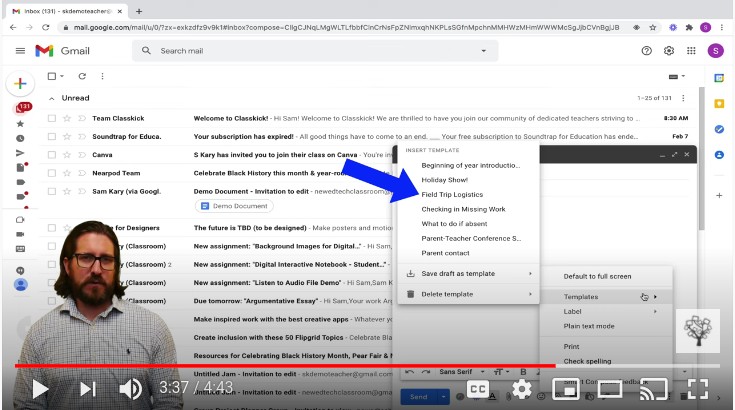
Conclusion
Gmail templates are just one was to utilize technology to streamline your practices and save yourself time.
For additional time-saving tips using technology, check out this other post about Reducing Time Grading by Giving Real-Time Feedback.
And if you’re interested in learning more Gmail Tips for Teachers, be sure to check out this other video!
For additional strategies for how to use technology to personalize learning, increase engagement, foster creativity, and more, click here:
How to Use Education Technology: The Ultimate Guide
And to read more about why I believe technology must be a central part of public education today, click here:
Why Education Technology?: The Ultimate Guide
Interested in the software I use to create my videos? Check out the links below! Many of these products offer a free trial to start and just clicking on the link helps to support The New EdTech Classroom!
Screenflow is a dynamic, intuitive video editing software that I use to create all of my YouTube videos. They’re currently offering a free trial! Get more details here.
I use Adobe Spark Post to design all of my YouTube thumbnails, as well as all my social media graphics. More information here.
If you’re interested in creating a website, these are a couple of programs I personally use and highly recommend: Bluehost is a web host that offers a professional platform for your website. You can check them out here.
Elementor is a powerful tool that helps with clean visual design for your website as well as marketing to further your website’s influence. More details here.

